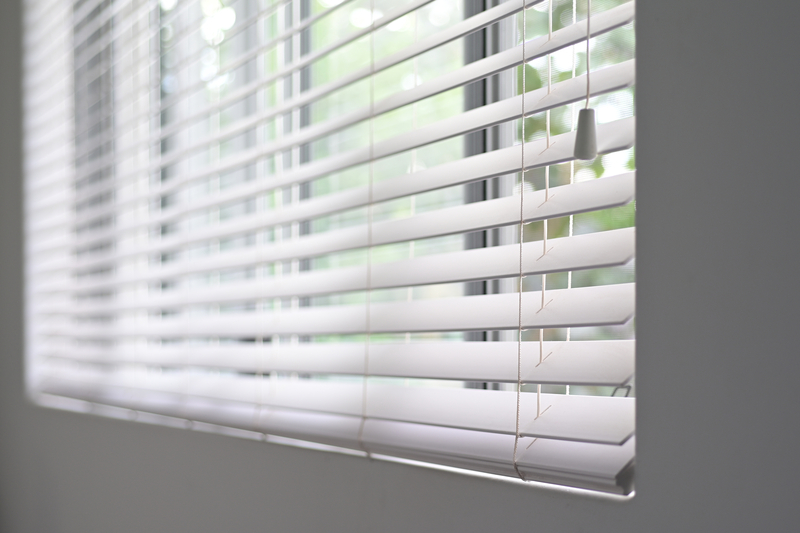Windows blinds are one of the available options when looking for the right window treatments.
The carefully designed shades feature horizontal slabs that you can adjust to control the amount of light that enters or pull them up for an unobstructed view.
Windows blinds won’t only provide privacy and shade but also add a decorative touch to your home. With so many styles and colors to choose from, you can always find the right match for your style.
If you have decided to give this one a try, the first step is determining the correct window blinds sizes.
The windows blinds are sold in stores, available in standard sizes. Getting the right size is crucial, but it can be pretty challenging if this is your first time shopping for blinds.
In this post, we explain all you need to know about window blinds sizes. Once you go through our tips, you will be able to pick the right fit.
How to measure windows
The standard window blinds sizes depend on the window size. Standard windows come in lengths that vary between 36 to 72 inches, with 36, 46,60, 72 inches as the available options. At the same time, the standard width is between 24 and 60 inches, with 24,36, 48, and 60 inches.
If bespoke window treatments appear as a costly option, you can have the standard ones trimmed to fit your window size. However, keep in mind that not all homes come with standard window sizes. Custom-built windows or older homes fall in this category, so you will need to order custom-made window blinds for the perfect fit.
Inside mount
The place where you mount the blinds will determine the size choice. Depending on whether you want to mount them inside or outside the frame, you will make the right pick.
An inside mount results in a clean and sophisticated look, letting the window trim stand out with its beauty. In addition, you are free to hang drapes to enhance the room if you wish to. On the other hand, you will need to get the window blind sizes suitable to ensure a proper fit. Also, the window should be deep enough so that you can install the hardware correctly.
How to measure the windows when you look forward to an inside mount?
First, you should measure the frame depth. For depth less than two inches, you are recommended to go for an outside mount.
Take diagonal measurements to ensure the window is square.
Measure the width of the window. Be extra careful with this step and measure at the top, middle, and bottom. If you get different numbers, work with the narrowest one to ensure the right fit.
Next, you should measure the height of the window. Repeat the same process as the previous step for accurate measurements. If the numbers differ, pick the highest one.
Outside mount
If an inside mount doesn’t fit your preferences or you can’t find the right size, an outside mount is a great solution. You have more flexibility when it comes to choosing the proper window blinds sizes and aren’t obligated to match it to the inch. However, the outside mount will cover the trim or other decorative details that you might want to have displayed. But it can be an excellent way to conceal old and outdated window frames.
When measuring your windows for outside mounted blinds, you don’t have to be as precise. Measure the width and count in 1 ½ inches on both sides. To measure the height, go from the window sill to the top of the frame. Keep in mind that you should add extra two inches at the top for the hardware.
Window blind slat sizes
The slats are the main parts you can adjust depending on whether you prefer privacy or want to let the sunlight in. The slats are available in a standard width of ½ inch, 1 inch, and 2 inches. With different slat sizes available, choosing the right ones might be overwhelming. However, the first guideline is the depth of the window. Wide slats will flatter deep windows, while the narrow ones will work for shallow windows.
If you have medium windows, you can play with the slot size. The medium-sized windows will look good with any slats, starting from the smallest to the largest. If you are more concerned about functionality rather than looks, determine whether you need enhanced privacy and light blocking. If you do, then the smaller slats will cover your needs. They are more densely packed, so small slats are ideal if you want more privacy. Also, they look less chunky when compared to larger ones. On the other hand, if you prefer natural light, you can opt for large slates.
Types of window blinds
Choosing the right window blinds isn’t only about the size. With so many different styles to choose from, you can find the right fit for your style and needs.
Vertical blinds
Vertical blinds offer utmost privacy while being easy to clean. You can easily control the level of privacy you want with the special handle.
Roller blinds
Roller blinds are available in different patterns, fabrics, and colors, so you have plenty of freedom to choose the right one for your space. Zebra blinds are one of the examples that are pretty common choices.
Roman blinds
If you are looking for an elegant opinion that uplifts the space, then the Roman blinds are the right pick for you. The design is versatile enough to fit many styles, while it won’t look visually jarring. Also, the cleaning process is relatively straightforward.
Venetian blinds
If you don’t prefer fabrics as a choice for blinds, you can opt for Venetian ones. They come with metal slats for easy control and are highly durable. However, cleaning each slat might be a daunting task for you.
